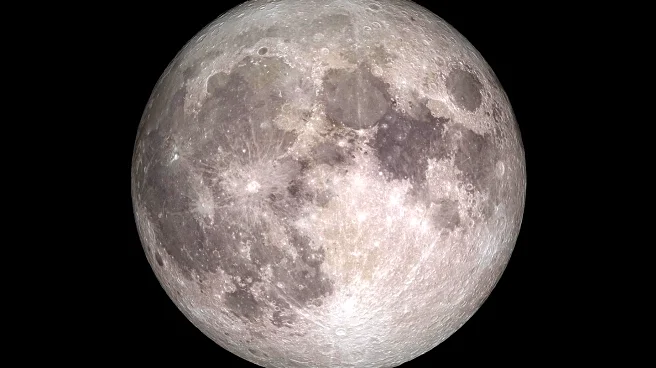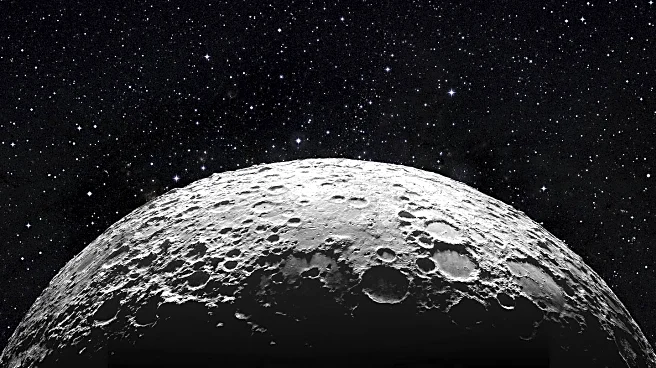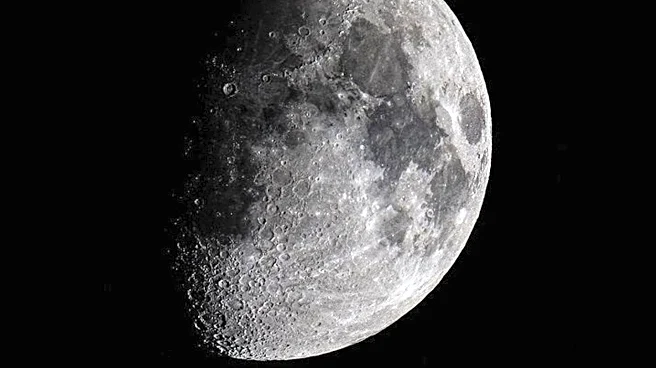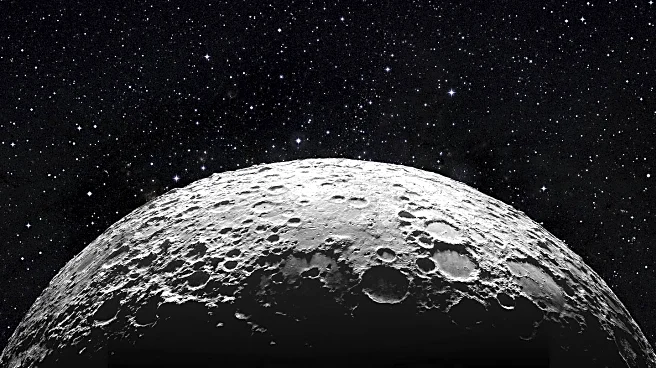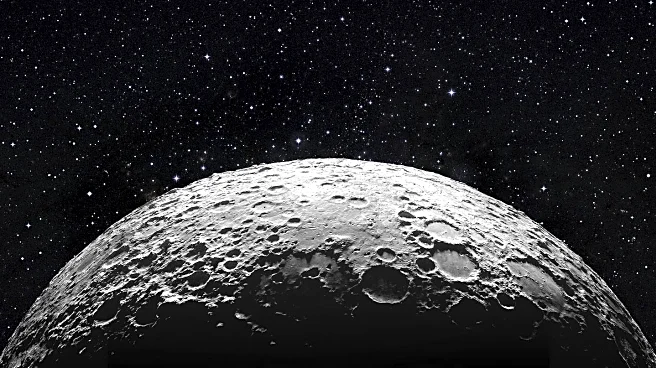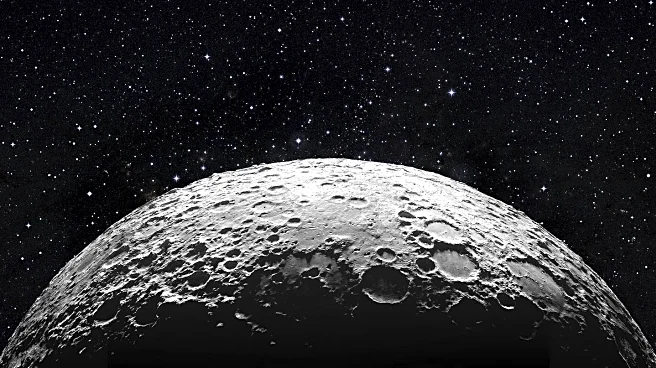What is the story about?
What's Happening?
A rare astronomical event known as the 'Black Moon' occurred early Saturday morning, marking a unique phase in the lunar cycle. This phenomenon happens when a third new moon appears in a season with four new moons, a rarity that occurs approximately every 30 months. The Black Moon rose at 2:06 a.m. EDT, but remains invisible due to its position between the Earth and the sun, with its illuminated side facing away from Earth. This event provides an excellent opportunity for stargazing, as the absence of moonlight allows stars and planets to appear brighter in the night sky. The Black Moon is positioned in the constellation Leo, and will make a close pass at Mars in the evening sky on Tuesday.
Why It's Important?
The Black Moon offers a unique opportunity for astronomers and stargazers to observe celestial bodies without the interference of moonlight. This event enhances visibility of stars and constellations, making it a prime time for sky gazing. Additionally, the Black Moon is significant in astrology, believed to be transformative and aligning individuals with their purpose. The absence of moonlight also affects tidal patterns, which can have implications for coastal regions. The event highlights the cyclical nature of lunar phases and their impact on both scientific observation and cultural beliefs.
What's Next?
Following the Black Moon, a thin crescent moon will become visible in the western sky about 30-40 minutes after sunset, offering another chance for observation. The next significant lunar event will be an eclipse visible over the South Pacific next month. Stargazers and astronomers will continue to monitor the night sky for these and other celestial events, which provide opportunities for both scientific study and public engagement with astronomy.
AI Generated Content
Do you find this article useful?
